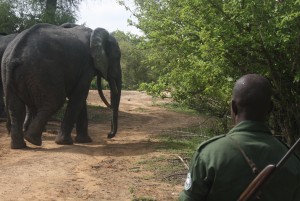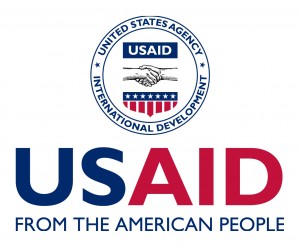The Western Region of Ghana, in the country’s tropical southwest, has attracted settler farmers since before most of its current residents can recall. The land supports coffee, cocoa, coconuts, oil palm, and foodstuffs like cassava and maize. Though farmers in the 1930s pulled up their coffee when they couldn’t find buyers for their beans, and cocoa faced similar challenges prior to Ghana’s independence, the region has consistently held an important role in the country’s GDP. Cocoa is by far the biggest earner for residents today – Ghana is second only to the Ivory Coast in global cocoa exports, and the cocoa from Ghana is said to be some of the finest quality cocoa in the world.
On my trip to Ghana over the summer of 2013, I spoke with two village elders in Cocoatown, along Ghana’s southern border with Cote d’Ivoire, about the changes they had witnessed in their community. The men are now in their early 80s, still fit from long days on their cocoa farms. They and their parents were born in Cocoatown. Our conversation revealed some of the challenges of squeezing ever more people on ever smaller, and less productive, land.
The decline in soil fertility over their lifetimes was the one major change that both men noted about the land: “Now we have to use fertilizer. Ten years ago, I hadn’t even heard of fertilizer,” one notes. “We used shifting cultivation for many years, but we can’t do that any longer. Now the land is too scarce.” He says his parents’ cocoa trees, now over 90 years old, are still producing because they were well sited beside the river. The tree variety, Tetteh Quarshie – named after the man who introduced cocoa to Ghana in the late 1870s –, is different from those used currently, producing smaller, thicker pods. On the upland, shadeless soils that cocoa farmers rely on today as land competition grows, hybrid trees produce for only twenty years before they peter out. These hybrid trees also face a variety of diseases, including Black Pod rot and Swelling Shoot disease.
Deforestation was another major change the men mentioned. “Now there’s almost nothing left of the original forest.” The solution of Ghana’s national government to the rapid deforestation of some of the most biodiverse forest in the world was to create a national park in the area that farmers would be forbidden to encroach upon. The elders described the difficulties the gazettement of the Ankasa park in 1976 posed for their communities: “We used to use that forest for food, for medicine, for building materials. Now we felt like we had nothing. Many people were upset.” While communities were able to rely for a time on off-reserve forests for these needs, these, too, were quickly depleted. Today, the men explained, those products they had relied on from the forest are imported, or, in the case of certain traditional medicines, simply unavailable.
The loss of virgin forest around farms hasn’t been all bad, though, according to the men: “We used to have trouble with the monkeys eating our cocoa, but now they stay in the forest reserve and don’t bother us.” What of other wildlife in the region? “We see most of the same things we used to see, but not as much.” Grasscutters, squirrels, duikers, antelopes, snakes were among those mentioned as making regular appearances. They noted that most members of their community were happy to join the “Community Resource Management Area (CREMA)” program offered by the Ghana Wildlife Division. “We knew pretty soon it would all be used up if we didn’t stop the hunting,” one of the elders explained.
Pressure on local land is only growing. Most of the young farmers I spoke with have had some trouble coming by their land, often leasing it from another farmer, or owning just a few acres. This differs from the decades over which chiefs in the region gave land to settlers in exchange for a bottle of gin. Only one of the farmers I spoke to in my two weeks in the region, though, had fewer than three children – all the rest had between 6 and 13. How will these smaller lands be divided between so many competing claims? When I put this question to young parents in the area, they express concern. They know their lands can’t sustain their whole family, but school fees are high, and the quality of schools in these rural areas make it difficult for their children to compete academically or in other jobs with those from urban districts.
When I ask the community elders, however, they are optimistic. Asked what they thought the young children in local communities might do when they grew up, they reply, “Farming, just as they always have. A few might go to school and get white collar jobs, or a few might go into industry if we get good industry here, but mostly they will farm.”
Perhaps what the elders mean is that the people of their community will make it work, as they have for decades – through trials like the loss of their land to the national park and the collapse of the coffee market. There will be winners and losers in the transitions, but agriculture will continue to be an important part of the region’s future. The challenge, then, in addition to developing alternative paths for the region’s young people, is for these communities and the local and national government supporting them, to find ways to make this agriculture as sustainable as possible and beneficial to as many people as possible.
This is one in a series of posts by PhD Student and BHL participant Lauren Withey, based on her time looking at rural natural resource management in Ghana in summer of 2013.


